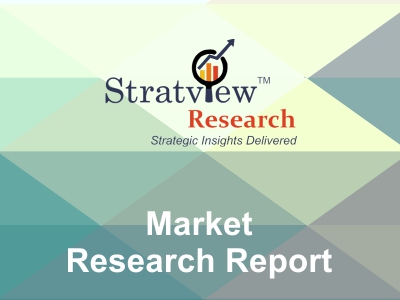Artificial Intelligence (AI) is revolutionizing the fashion industry by introducing innovative solutions that enhance efficiency, creativity, and customer engagement. This article explores the latest trends in AI-driven fashion, providing insights into market dynamics, growth projections, and the transformative impact of AI technologies on the global fashion landscape.
AI's Impact on Fashion: A Transformational Journey
AI technologies, including machine learning, computer vision, and natural language processing, have ushered in a new era of possibilities for fashion brands. These technologies enable predictive analytics, personalized recommendations, virtual try-ons, and sustainable practices, fundamentally changing how fashion companies design, produce, market, and sell their products.
Key Trends in AI-driven Fashion
- Personalization at Scale: AI algorithms analyze vast amounts of consumer data to offer personalized product recommendations, styling advice, and shopping experiences tailored to individual preferences. This personalization not only enhances customer satisfaction but also drives higher conversion rates and customer loyalty.
- Virtual Try-Ons and Augmented Reality (AR): Virtual fitting rooms powered by AI allow shoppers to visualize how clothing items look and fit in real-time, enhancing the online shopping experience. AR technologies further elevate this by overlaying digital information on physical environments, enabling interactive product displays and virtual styling sessions.
- Predictive Analytics and Demand Forecasting: AI-driven predictive analytics enable fashion brands to forecast trends, anticipate consumer demand, and optimize inventory management. By analyzing historical sales data, social media trends, and market signals, AI helps brands minimize stockouts, reduce excess inventory, and respond quickly to market shifts.
- Sustainable Fashion: AI plays a pivotal role in promoting sustainability within the fashion industry. By optimizing supply chain operations, reducing waste, and enabling ethical sourcing practices, AI helps brands meet growing consumer demand for eco-friendly and socially responsible products.
- Creative Collaboration: AI tools are increasingly used in design and creativity, assisting designers in generating new ideas, patterns, and styles based on historical trends and consumer preferences. This collaboration between AI and human creativity fosters innovation and pushes the boundaries of traditional fashion design.
Market Dynamics and Growth Projections
The AI-driven fashion market is characterized by dynamic growth and increasing adoption across the globe:
- Market Size and Growth: According to Stratview Research, the global AI in fashion market size was valued at USD 0.54 billion in 2022 and it is projected to reach USD 3.20 billion by 2029, growing at a CAGR of 29% during forecast period of 2023-2029. This growth is driven by technological advancements, rising consumer expectations, and the need for fashion brands to differentiate themselves in a competitive market landscape.
- Regional Insights: North America and Europe lead in AI adoption within the fashion industry, driven by technological infrastructure, consumer awareness, and established fashion ecosystems. Asia Pacific, Latin America, and Middle East & Africa are also witnessing rapid adoption as technology becomes more accessible and consumer behavior shifts towards digital platforms.
Challenges and Considerations
Despite its promising outlook, AI-driven fashion faces several challenges:
- Data Privacy and Security: Handling large volumes of consumer data requires stringent data privacy measures and compliance with regulations such as GDPR. Ensuring data security and building consumer trust are critical for sustainable AI adoption in fashion.
- Ethical and Bias Concerns: AI algorithms must be trained and deployed responsibly to avoid biases related to race, gender, or body type in fashion recommendations and decision-making processes. Transparency and fairness in AI applications are essential to maintaining ethical standards within the industry.
- Technological Integration: Implementing AI technologies requires investment in infrastructure, talent acquisition, and ongoing training to maximize the potential benefits. Overcoming technological barriers and ensuring seamless integration with existing systems are key considerations for fashion brands adopting AI.
Future Outlook and Innovation
Looking ahead, the future of AI-driven fashion is characterized by continuous innovation and technological advancements:
- Emerging Technologies: Innovations such as AI-powered sustainability solutions, real-time trend analysis, and automated design processes will drive the next wave of transformation in the fashion industry. These technologies will enable brands to innovate faster, reduce time-to-market, and create more personalized and sustainable fashion experiences.
- Consumer-Centric Innovation: As consumer preferences evolve, AI will play a crucial role in enabling brands to adapt and personalize their offerings in real-time. From hyper-personalization to immersive shopping experiences, AI-driven innovations will redefine how consumers interact with fashion brands and products.
Conclusion
In conclusion, AI-driven fashion is at the forefront of innovation, reshaping the industry with its transformative capabilities. From personalized shopping experiences and virtual try-ons to sustainable practices and predictive analytics, AI technologies are revolutionizing every aspect of the fashion value chain. As fashion brands continue to embrace AI, they are poised to unlock new growth opportunities, enhance customer engagement, and drive sustainable practices that resonate with today's conscious consumers. By staying abreast of emerging trends and overcoming challenges, fashion brands can leverage AI to navigate the complexities of a digital-first world and lead the industry towards a more connected, creative, and sustainable future.





Comments